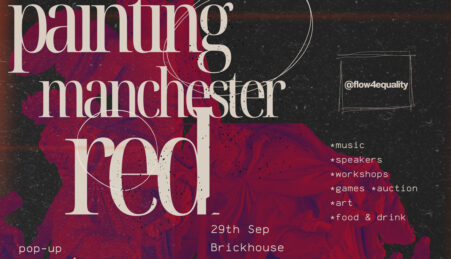By Ellen Le Messurier
The final lecture in the ‘Body Images’ series, part of the Humanities in Public (HiP) programme, was marked by the lecture theme ‘Becoming ‘too good to be real’: the desirability of obviously augmented breasts’. The lecture was led by Professor Debra Gimlin of Aberdeen University, whom I had a chance to speak to before the lecture. I was able to ask her why she had focused her studies on this topic and why, now, did she choose to talk about it. She explained that, “The topic of cosmetic surgery is incredibly prevalent in today’s society and there is a lot of new research, quite negative in some cases, regarding women’s narratives that is important to share.”
As, like Gimlin says, cosmetic surgery is becoming very prevalent in today’s society, I was not surprised to see a good turnout to the lecture. The lecture was introduced by Dr Melanie Latham of Manchester Metropolitan University (MMU), in which she re-iterated Gimlin’s many academic achievements and that she has concentrated her studies to the ‘narratives of body image and cosmetic surgery’. Dr Latham also instigated these series of talks to happen at MMU.
Professor Gimlin began by explaining that although there is a big ongoing debate around cosmetic surgery and whether it is morally right or not, she would not be talking about that. Instead she would be focussing on the change in women’s narrative when it comes to breast enhancement. Why breasts in particular? As breasts seem to be the ideal sign of femininity. Professor Gimlin reflects that they are already subjected to being aesthetic in our society without surgery, through the way they are often objectified and desensitised from the woman.
“The amount of slang for a woman’s breasts aestheticizes this part of the woman which is why it is perhaps why breast enhancement is so popular in our society.”
She talked of how she conducted two sets of interviews, one in the mid-90s and one in 2007 and how this showed a dramatic difference in attitudes. The women in her first survey, when asked whether they wanted their breast constructions to look real, on majority, replied, “No. The whole point of the operation is for them to look fake.” In Gimlin’s research this was because they wanted others to be aware of these unusually perfect breasts. They wanted them to be noticed and admired, and many of the women interviewed were quite open in telling Professor Gimlin that they were paid for by their husbands or male partners.
This was particularly shocking to me, and when asking fellow audience member Samantha Johnson, 24, who works in HR, she said, “It was shocking, however not surprising.” When the floor was opened for questions Miss Johnson voiced whether the obvious erotic image these women desire is perhaps linked to the increasing numbers in sexual assaults and in particular eating disorders.” Gimlin admitted that this perfect image, this idealised fakery does come at some social costs, however could not say for sure whether this was the case.
The views of the women she interviewed in 2007 revealed to her the true shift in the women’s narrative today. When asked the same question as those in the 90s, why did they want to have the surgery, the majority replied that it was because they believed that an unrealistic, perfect pair of breasts is now viewed as normality and by having it they just wanted to be accepted. A sad and shocking discovery.
The movement and progression of cosmetic surgery has changed the women’s narrative. It is not about reverting back to that youth, our bodies in their prime, it is about improving ourselves body part by body part. This is all a product of our ‘make over’ culture and our societies need for self-transformation. A thoroughly interesting and thought provoking finale to the Body Images series.
Ellen is a first year English student at MMU. She loves to dance, play music and let her hair down with friends in the evening.





Leave a reply